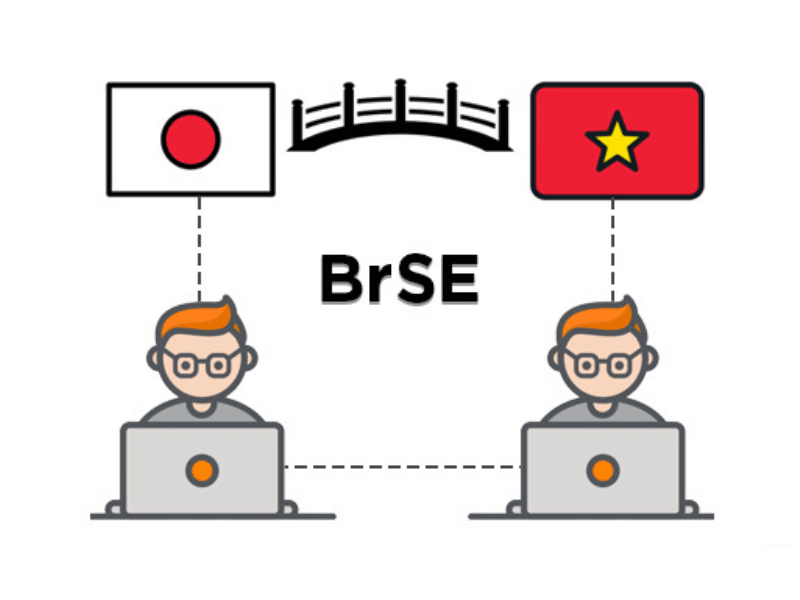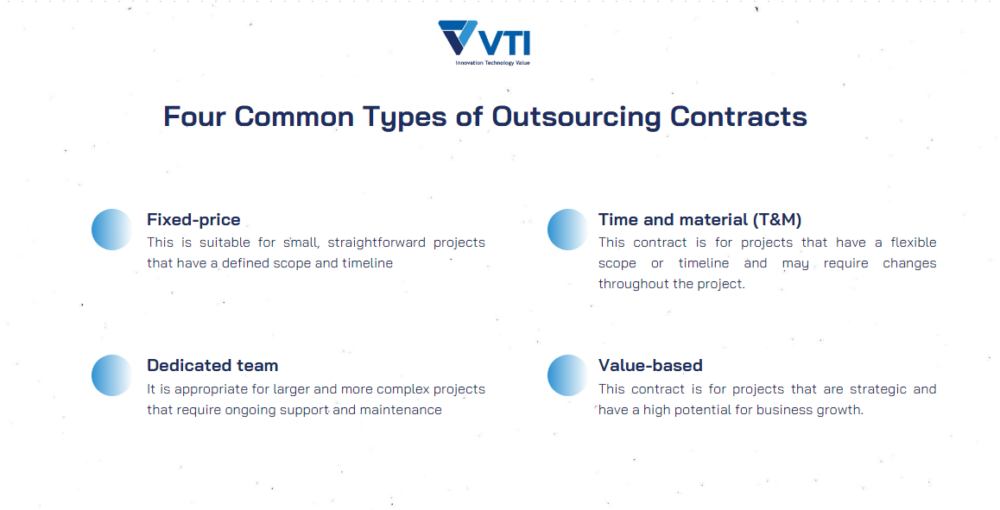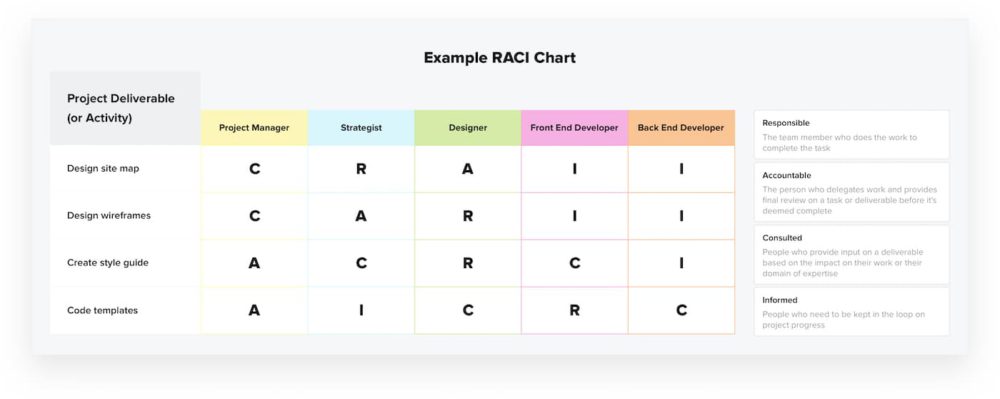Vietnam, with its burgeoning tech industry and skilled workforce, has emerged as a prime destination for companies looking to leverage cost-effective outsourcing solutions without compromising on quality. However, like any business venture, outsourcing software development in Vietnam comes with its own set of risks. A successful relationship requires an understanding of these possible dangers and the application of practical mitigation methods. In this blog, VTI will walk you through some of the most common challenges of IT outsourcing in Vietnam and provide actionable solutions to minimize them.
How to Minimize Challenges of IT Outsourcing in Vietnam
1. Communication Barriers
One of the foremost challenges of IT outsourcing in Vietnam stems from the potential language differences and cultural nuances. Language differences, as well as subtle cultural nuances, can create misunderstandings that have the potential to disrupt project timelines and compromise the overall quality of work delivered. For example, if you are a company in America and you want to hire an outsourcing team in Vietnam, then either you will have to clock in early to accommodate their working hours, or they will need to work in the middle of the night to be present during your working hours.
How to minimize this challenge?

- Working with a Bridge System Engineer (BrSE): BrSEs are engineers who communicate and manage the progress of overseas development. They act as intermediaries, clarifying requirements, addressing queries, and managing client expectations. They facilitate clear and effective communication and, therefore play a vital role, particularly in IT offshoring projects.
- Choosing a Company with an Office in your Home Country: This office will directly respond to problems that arise. They have the advantage of speaking your language and understanding the culture, and technical regulations of your country.
- Utilizing Collaboration Tools and Software: Platforms like Zoom, Backlog, Trello, etc. can help you and the outsourcing company communicate better.
- Organizing Training and Cultural Sensitivity Programs: Training sessions can focus on effective communication styles, cultural awareness, and best practices for working to avoid any cultural sensitivity.
2. Legal and Regulatory Compliance
Legal and regulatory compliance is one of the most common challenges of IT outsourcing in Vietnam. This includes local labor laws, tax regulations, and other compliance requirements, which can be significant challenges for businesses operating in an unfamiliar jurisdiction. Labor laws govern crucial aspects such as employment contracts, working hours, wages, and benefits. Tax regulations, on the other hand, dictate how businesses should handle their financial obligations to the government such as corporate income tax, value-added tax (VAT), and other levies. Moreover, compliance requirements can extend to various aspects of business operations, including licensing data protection, and health and safety standards.
There are four common types of outsourcing contracts which are fixed-price, time and material (T&M), dedicated team, and value-based. Depending on the scope of work, and the complexity of the project, businesses can consider which type of contract is suitable for their needs.

- Fixed-price is suitable for small, straightforward projects that have a defined scope and timeline
- Time & material contract is for projects that have a flexible scope or timeline and may require changes throughout the project.
- A dedicated team is appropriate for larger and more complex projects that require ongoing support and maintenance
- A value-based is for projects that are strategic and have a high potential for business growth.
For more information about each type of contract, please read more here:
[EBOOK] Strategic IT Outsourcing: Optimizing Cost and Workforce Efficiency
How to minimize this challenge?
- Establishing a Clear and Comprehensive Contract: Establishing a contract that outlines compliance requirements for both parties is vital to minimize these challenges of IT outsourcing in Vietnam. This contract should clearly define the roles, responsibilities, and obligations of each party.
- Partnering with Legal Experts: They provide essential assistance in interpreting and applying complex legal frameworks, ensuring compliance with labor laws, tax regulations, and industry-specific standards. In the event of disputes, they offer representation and resolution strategies.
- Networking with Local Partners and Industry Peers: Local partners frequently have firsthand knowledge of the most recent developments and can advise on how to navigate compliance issues.
3. Turnover and Retention
Turnover and retention are considered to be challenges of IT outsourcing in Vietnam due to the country’s burgeoning economy has created a competitive job market, offering a plethora of opportunities for skilled professionals. Employees in Vietnam, like anywhere else, seek opportunities for career growth and development. This multitude of opportunities can make it easier for people to find new jobs if they are dissatisfied or better chances appear. Companies must be vigilant in their efforts to maintain their personnel in this volatile landscape.
How to minimize this challenge?
It is recommended to look for companies with a turnover rate below 10% since it often indicates that these companies offer stability in terms of human resources.
Businesses can inquire about this through online platforms like Glassdoor, Indeed, and LinkedIn host reviews and ratings from employees and former employees. Researching the company’s employee retention programs and policies, such as benefits, advancement opportunities, social activities, etc. can help businesses understand how outsourcing companies keep their talents.
4. Unforeseen and Hidden Costs
These are expense challenges of IT outsourcing in Vietnam that may not be immediately evident during the initial planning stages but can emerge later, impacting budgets and profitability.
- Cost of Getting a Reliable IT Service Provider: This may charge you some costs like consultancy and intermediaries fees, project coordinators, etc.
- Scope Creep: This could result in the latest features, and technologies introduced that need to be added to stand the competition as well as to give the best UX.
- Transition Cost: There have been some instances where outsourced IT projects have been left uncompleted, if hourly transition charges or ‘run charges’ are imposed, then it will surely affect the cost of the IT outsourcing project.
How to minimize this challenge?
- Implementing clear Scope of Work (SOP): This document outlines the project scope, deliverables, timelines, and specific requirements in detail, leaving little room for unexpected expenses.
- Issuing a Request for Proposal (RFP): The RFP should include explicit instructions, project objectives, evaluation criteria, and a breakdown of cost components, allowing businesses to make informed decisions based on transparent pricing.
- Creating a Detailed Execution Plan: This plan encompasses every phase of the project, including milestones, resource allocation, quality control measures, and a contingency strategy
5. Lack of Control
When projects are given to an outsourcing company, the businesses may have little control over them. For example, a software development company based in the United States decided to outsource a portion of its coding and programming work to a team of developers in Vietnam. Due to geographical distance, The U.S.-based company now has limited direct oversight, relying on regular progress reports and virtual meetings to stay updated on the project’s status. If there are any unexpected technical challenges or deviations from the project timeline, the U.S. company may experience delays in the development process.
How to minimize this challenge?
- Implementing Agile Project Management Methodology: Such as Scrum or Kanban, can provide a structured framework for managing IT projects. Daily stand-up meetings, backlog grooming sessions, and sprint reviews facilitate frequent communication and visibility into the project’s progress.

Resource: teamgantt.com
- Building a RACI Matrix: The RACI Matrix is a simple diagram used in project management to map task roles and responsibilities. RACI stands for “Responsible, Accountable, Consulted, Informed”, defining the level of responsibility each person involved in a project will have on an individual task or decision. Using a RACI matrix for a project helps you eliminate confusion by identifying who is doing what at a more granular level than simple task assignments.
- Building Trust with your Outsourcing Company: By maintaining regular dialogue, sharing project updates, and addressing concerns promptly, trust is cultivated. If you try to control every step, the outsourcing company won’t be able to operate at maximum efficiency.
Conclusion
In summary, the potential challenges of IT outsourcing in Vietnam do warrant consideration. However, with a deep understanding of these risks, businesses can find solutions available for each challenge that may arise in this process. It’s worth noting that the advantages often outweigh the challenges of IT outsourcing in Vietnam, as evidenced by Vietnam’s prominent position in the global IT outsourcing landscape
With more than six years of experience, VTI has been instrumental in providing tailored solutions to businesses, consulting with insights and strategies that align seamlessly with specific needs, minimizing common challenges of IT outsourcing in Vietnam…
Contact VTI’s team of experts if you have any queries or concerns about the challenges of IT outsourcing in Vietnam. We’ll be more than pleased to assist you.
———-
VTI – Innovation Technology Value
Hotline: (+84) 24 7306 9996
Email: [email protected]
Facebook: https://www.facebook.com/VTI.JSC/
LinkedIn: https://www.linkedin.com/company/vtijsc/
![[FREE EBOOK] Strategic Vietnam IT Outsourcing: Optimizing Cost and Workforce Efficiency](https://vti.com.vn/wp-content/uploads/2023/08/cover-mockup_ebook-it-outsourcing-20230331111004-ynxdn-1.png)




